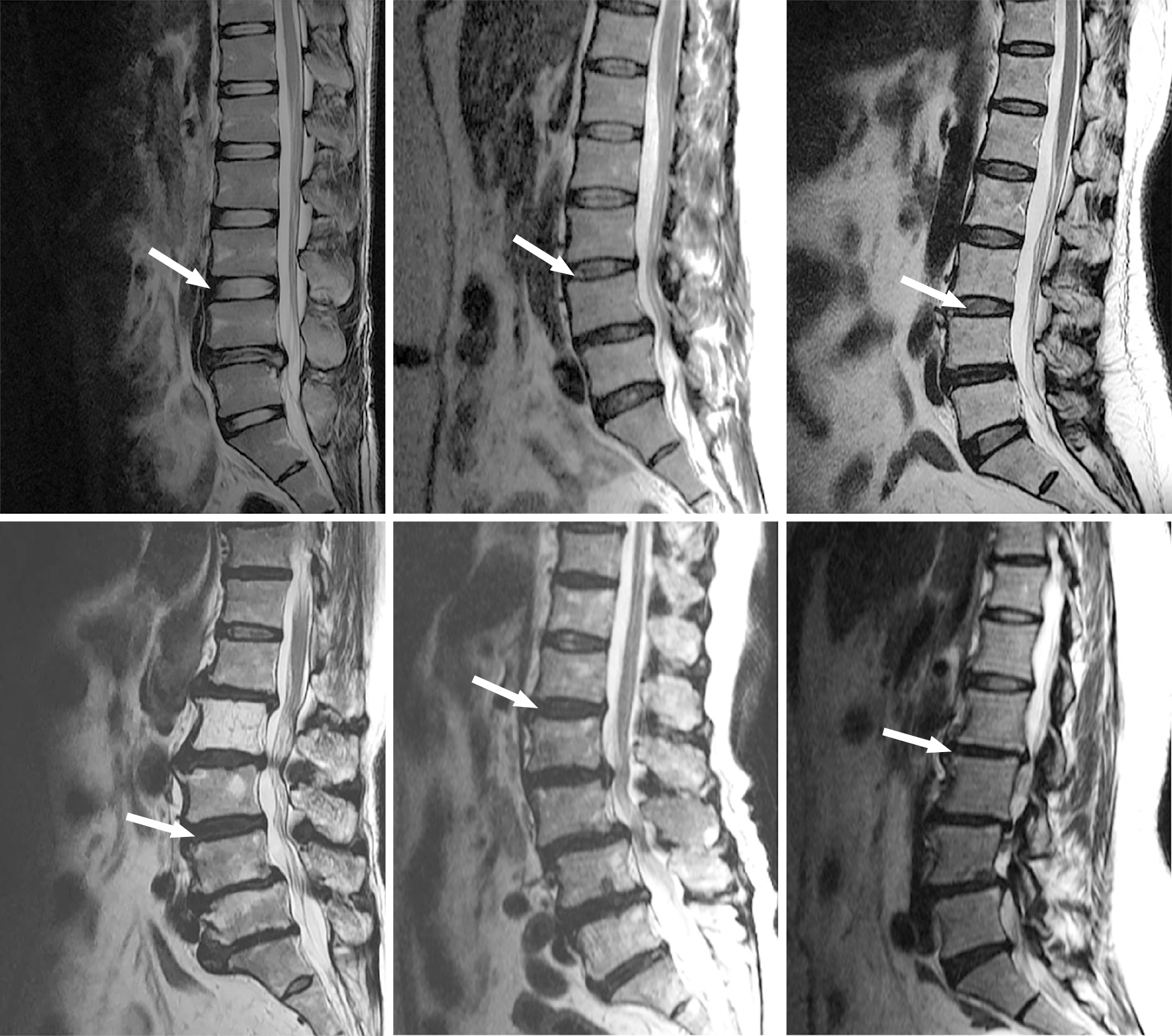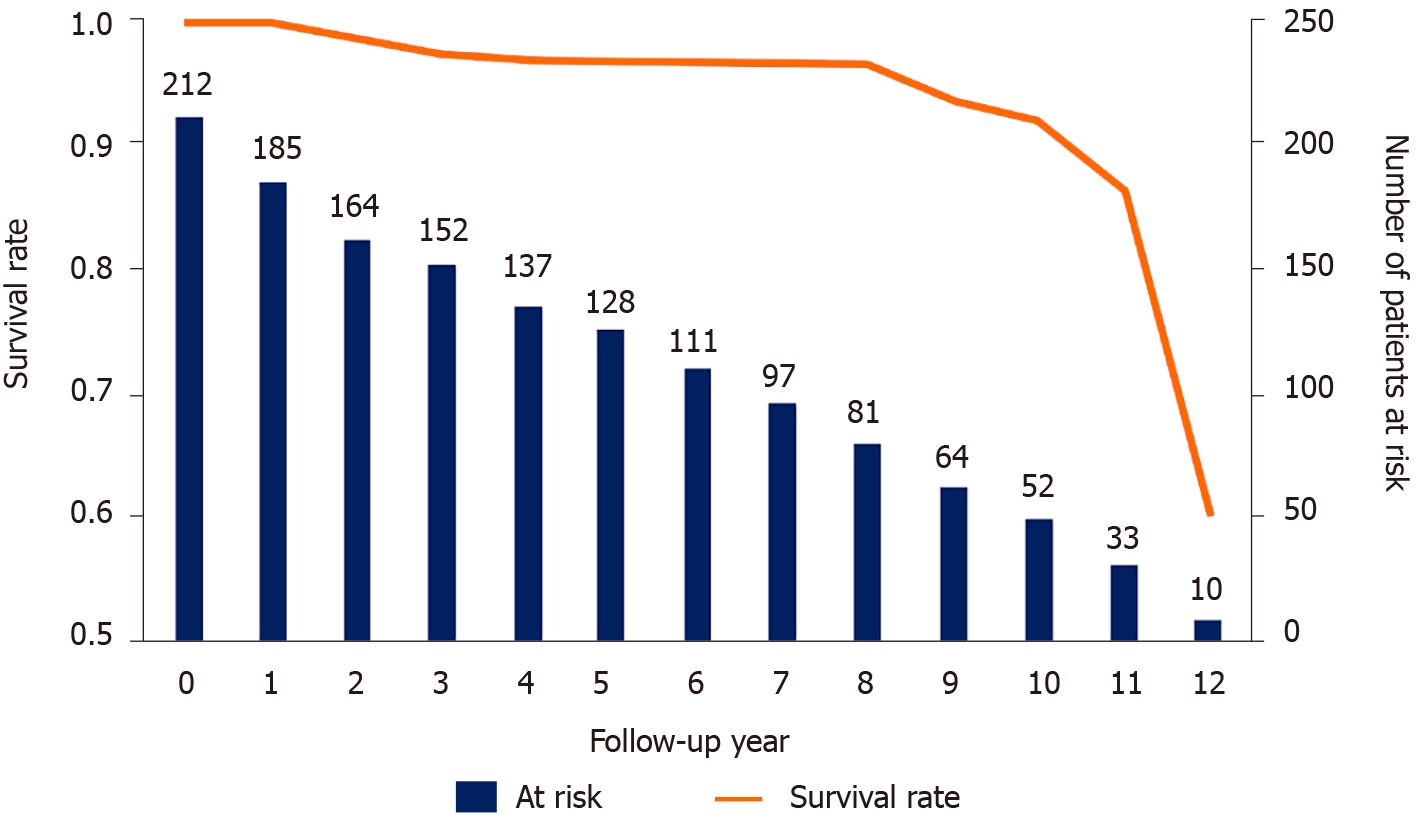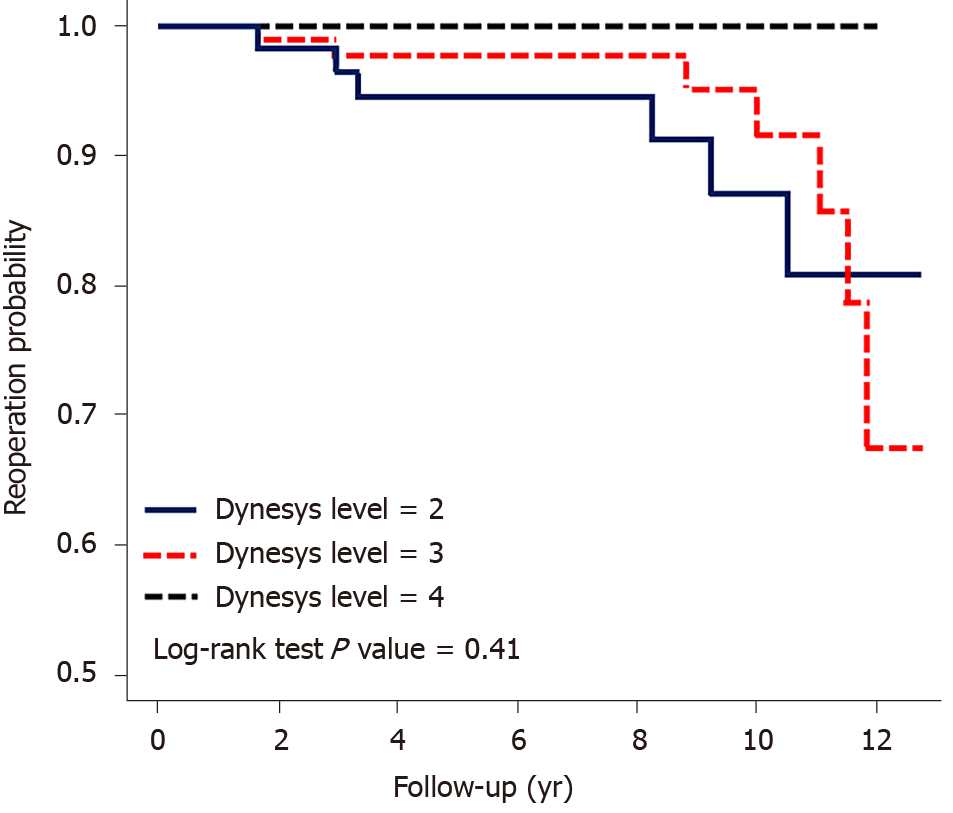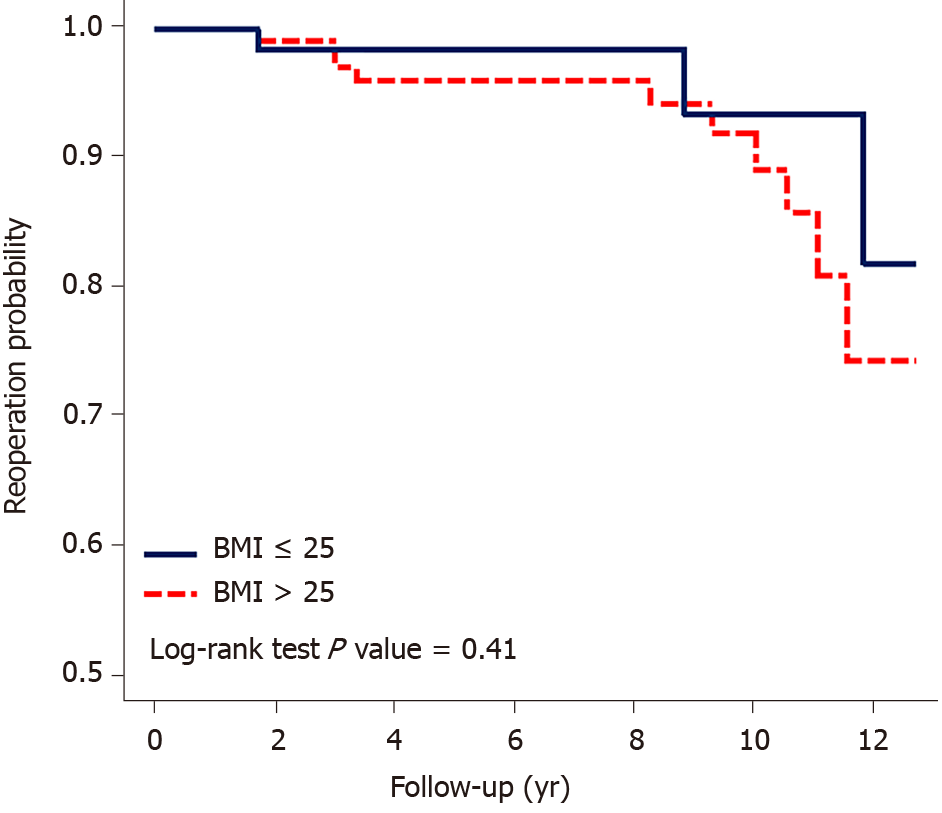Copyright
©The Author(s) 2021.
World J Clin Cases. Dec 16, 2021; 9(35): 10850-10860
Published online Dec 16, 2021. doi: 10.12998/wjcc.v9.i35.10850
Published online Dec 16, 2021. doi: 10.12998/wjcc.v9.i35.10850
Figure 1 Magnetic resonance images of patients.
Arrow points at the adjacent level.
Figure 2 Kaplan-Meier survival analysis of cumulative reoperation risk.
A total of 54 patients were followed-up for more than 10 years.
Figure 3 Probability of reoperation for upper adjacent segments with different modified Pfirrmann and University of California-Los Angeles grades.
No significant difference was observed between adjacent degenerative grades.
Figure 4 Survival analysis for the number of Dynesys-instrumented levels.
Survival analysis revealed no significant difference in the number of instrumented levels.
Figure 5 Survival analysis for a body mass index cutoff of 25 kg/m2.
No significant difference was observed between body mass index > 25 kg/m2 and body mass index < 25 kg/m2. BMI: Body mass index.
- Citation: Chen KJ, Lai CY, Chiu LT, Huang WS, Hsiao PH, Chang CC, Lin CJ, Lo YS, Chen YJ, Chen HT. Adjacent segment disease following Dynesys stabilization for lumbar disorders: A case series of mid- and long-term follow-ups. World J Clin Cases 2021; 9(35): 10850-10860
- URL: https://www.wjgnet.com/2307-8960/full/v9/i35/10850.htm
- DOI: https://dx.doi.org/10.12998/wjcc.v9.i35.10850













